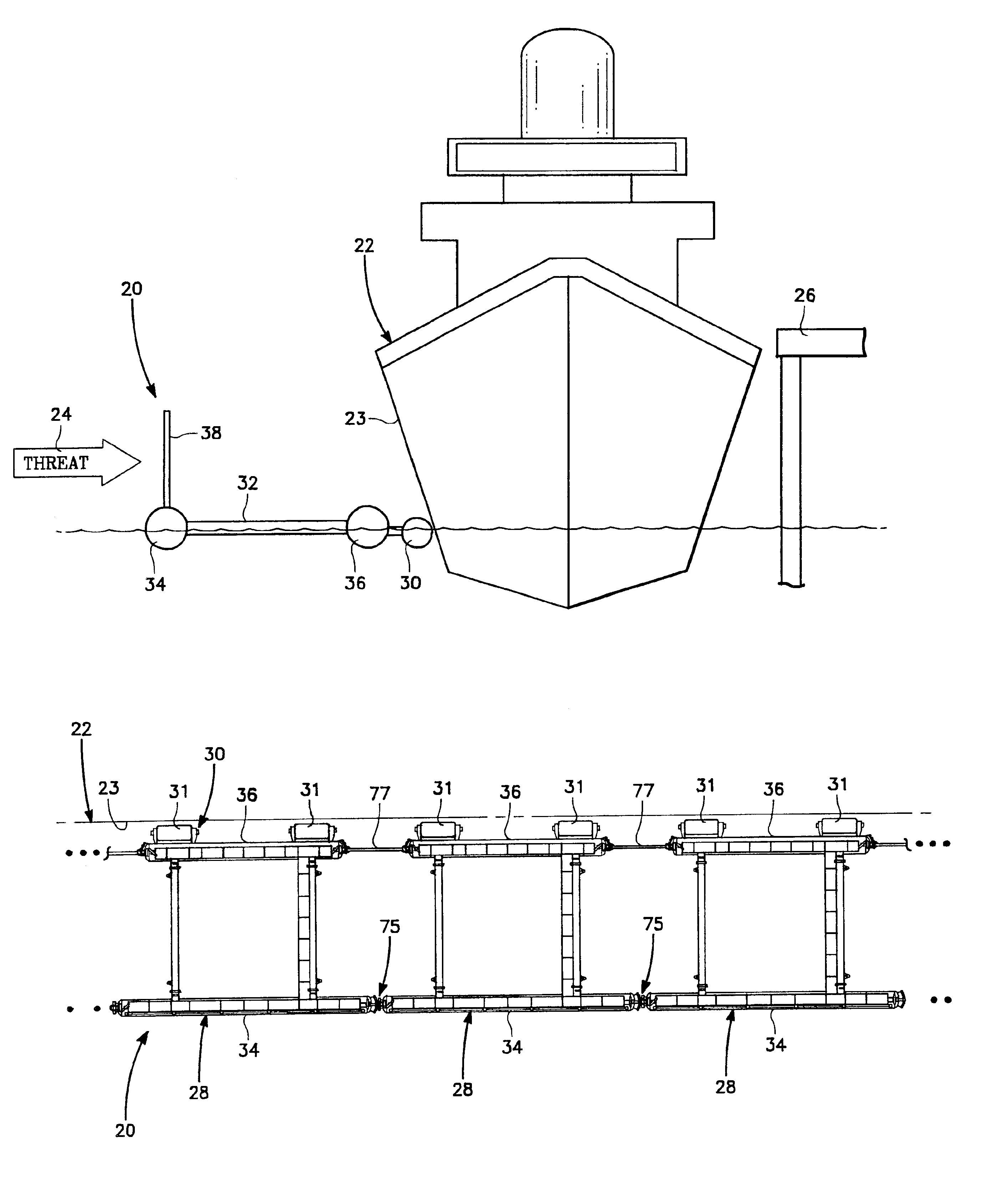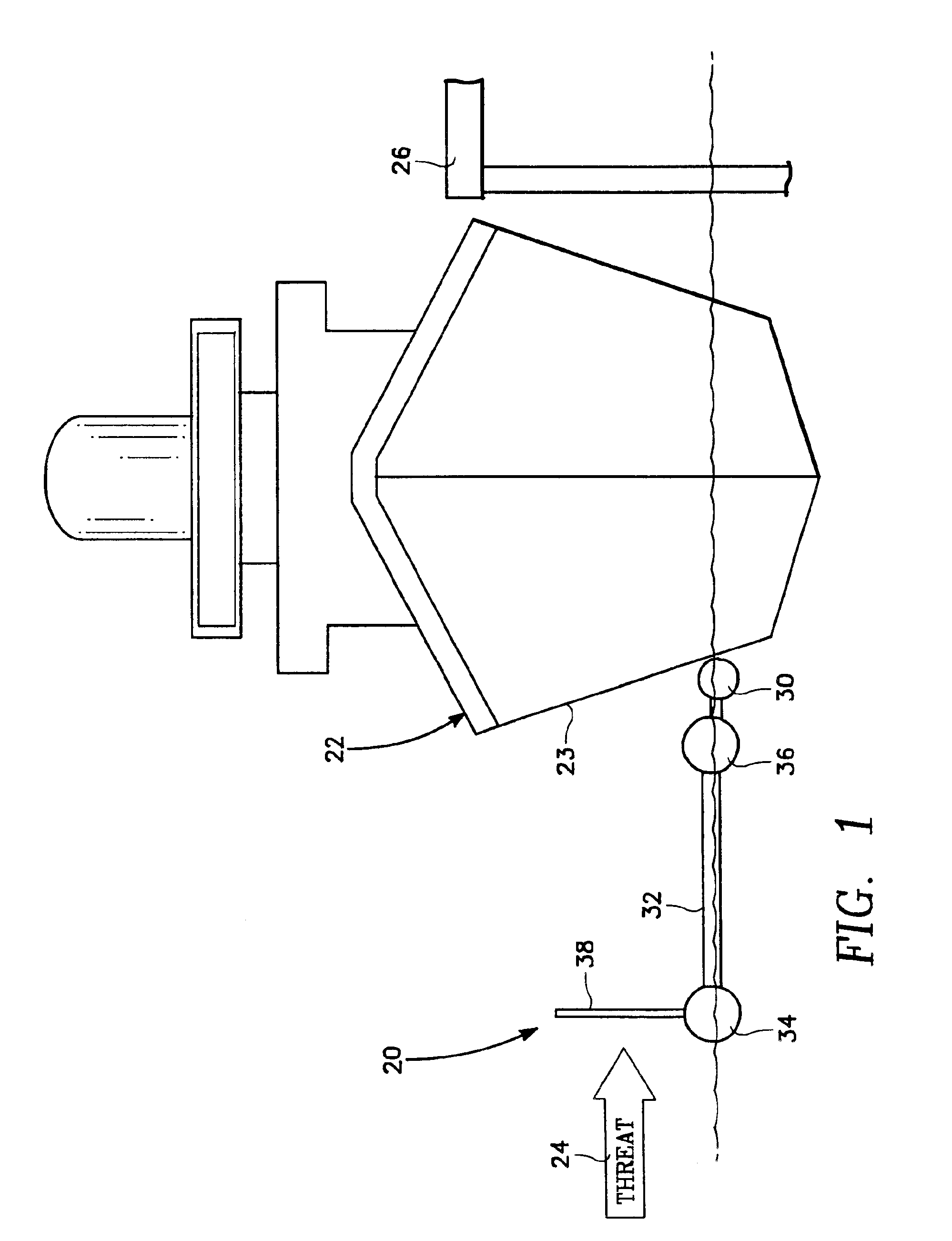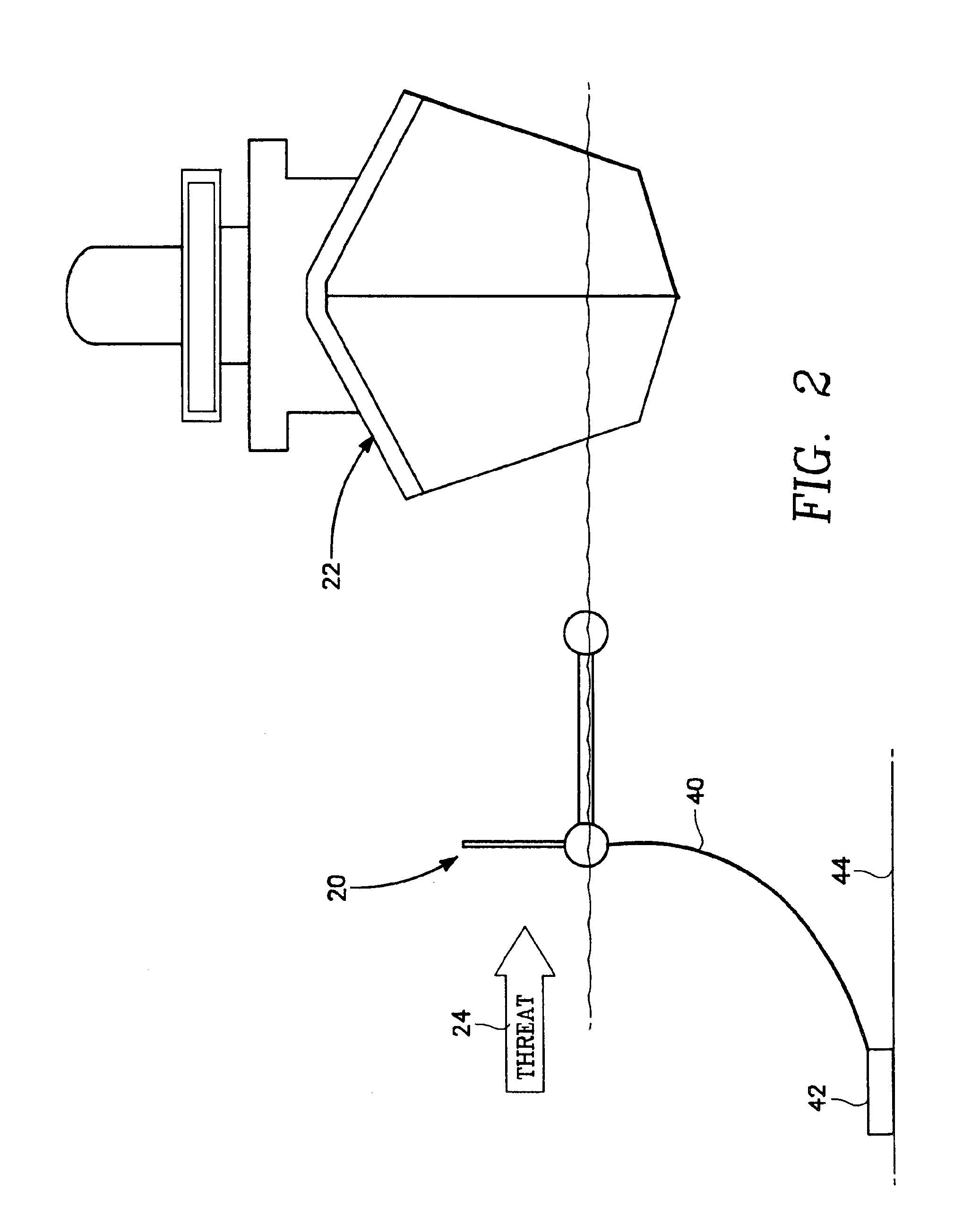Near shore port security barrier
- Summary
- Abstract
- Description
- Claims
- Application Information
AI Technical Summary
Benefits of technology
Problems solved by technology
Method used
Image
Examples
Embodiment Construction
Referring to FIGS. 1-4, the in near shore port security barrier 20 comprises a barrier which protects an ocean going vessel 22 from attack by a threat watercraft 24 while docked at a pier 26 at harbor facility or at a set distance from the pier 26 depending upon on a perceived threat (for example threat watercraft 24) and port characteristics. The threat watercraft 24 may be a pleasure boat or other small high speed vessel, which is laden with explosives or munitions that are detonated when the watercraft 24 is in proximity to vessel 22. When the explosive materials aboard watercraft 24 are triggered severe damage to vessel 22 generally occurs.
The near shore port security barrier 20 comprises a plurality of barrier modules 28 (FIG. 3) which are fitted together in the manner illustrated in FIG. 4. Each module includes fendering system 30, which protects vessel 22 and near shore port security barrier 20 during normal port operations and also function to dissipate energy of, any threat...
PUM
 Login to View More
Login to View More Abstract
Description
Claims
Application Information
 Login to View More
Login to View More - R&D
- Intellectual Property
- Life Sciences
- Materials
- Tech Scout
- Unparalleled Data Quality
- Higher Quality Content
- 60% Fewer Hallucinations
Browse by: Latest US Patents, China's latest patents, Technical Efficacy Thesaurus, Application Domain, Technology Topic, Popular Technical Reports.
© 2025 PatSnap. All rights reserved.Legal|Privacy policy|Modern Slavery Act Transparency Statement|Sitemap|About US| Contact US: help@patsnap.com



